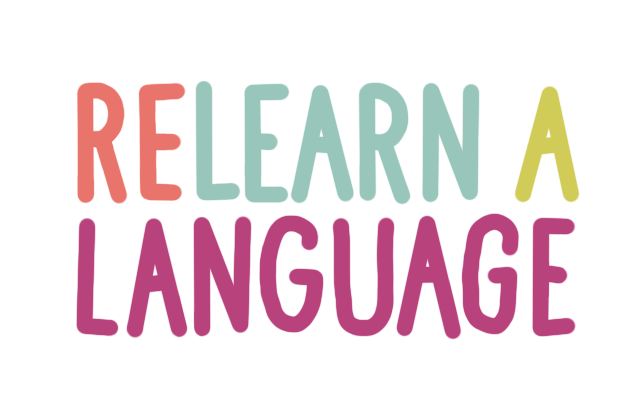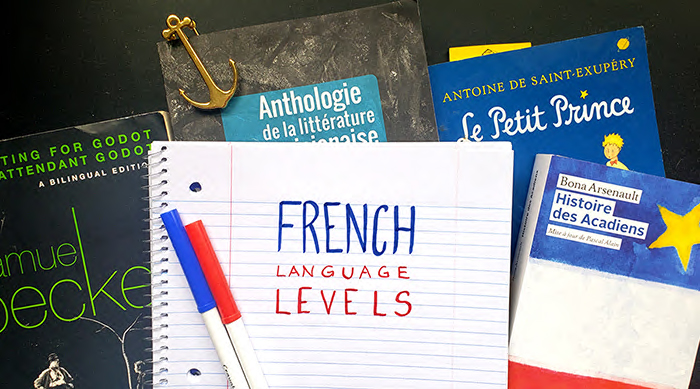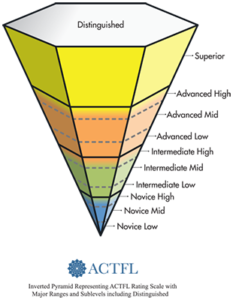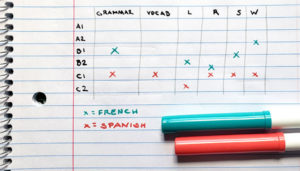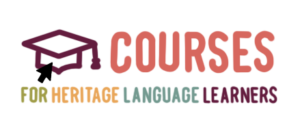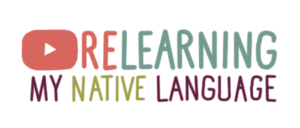French Language Levels
Quiz Time 8 min
If you’re looking to measure your French language levels, the fastest way might sem like an online quiz.
But can an electronic test really measure your real French level?
In this article, I’ll give you a collection of a few different French level quizzes… but I’ll also explain what the different levels mean and how you yourself can get better at measuring your own language level.
So if you want a quick quiz, they’re in the first section.
But if you read all of this article, you will have a very good understanding of your own French level, as well as a deep understanding of language levels in general.
And at the bottom, I’ll give you some great links to awesome French learning resources so you can find some great tools to keep improving your language skills.
On-y-va !
5 French level quizzes (and why I don’t recommend them)
I speak 6ish languages (depending on your definition of “speak”).
With my French, I’ve been able to make monolingual French-speaking friends in Quebec, attend a cabaret for locals in Paris, and chat with Haitian housekeepers while visiting the Dominican Republic.
But an electronic French test can’t measure any of that.
What they do often measure is your ability to pick out grammar from a line-up of sentences. They measure your spelling and vocabulary too.
But they can’t tell you how clear your accent is.
They can’t tell you how good you are at guessing words correctly from English.
And they certainly can’t tell you how rich your cultural knowledge is, or how good you are in a conversation.
So if you’re here just for the 5 French quizzes as promised here they are. (You’ll even notice a few of them specifically say that they’re not for academic uses.)
- France-langue.com eTest
- Transparent Language eTest
- LanguageLevel.com
- LanguagesCoursesUK eTest
- Lingoda eTest
So if you want to find other ways to measure your own French level, keep reading.
Part 1: Learn how society classifies French levels
First, to understand the levels we’re going to be talking about, we need to do an overview of the two main language level systems. Then in the next section, we’ll go into how you can use these classifications to place yourself.
If you already understand language levels, you can skip onto the next section, but know that this section will be referenced again going forward.
US French levels (ACTFL)
As someone who was raised in the US, how we measured language levels was a mystery to me.
So let’s just quickly take a look at what the US language level system looks like so we can translate it into the European system.
If you’re not from the US, feel free to skip to the European section.
The idea behind this scale is that you have 4 levels:
- Novice
- Intermediate
- Advanced
- Superior
Each of those 4 language learning levels has another 3 sub-sections (low, mid, and high) with the exception of Superior. Superior is the end goal of the American teaching system and a kind of platform you end up at.
The chart here shows, in theory, how much proficiency you have at each level.
So for example, the novice student has very little experience and thus shown here to take up a very small amount of space. The advanced student has much more knowledge and thus takes up more room on the pyramid.
My biggest issue with this scale is that it is only used in America. It separates American language students from other language students and teachers in most other parts of the world.
The European model, which we’ll get into soon, is used not only in Europe but in Canada, Latin America, and elsewhere.
So if you’re working with a French professor from France, Canada, Belgium, Haiti, or any other francophone nation, you’ll have to be able to translate the American language levels into the European scale in order to be able to work with them.
That out of the way, let’s look into the European French language level measurements.
European French levels (CEFR)
The Common European Framework Reference levels aren’t perfect–but they’re a pretty good reference.
| French Level Group | Level | Description |
|
A
Basic user |
A1 | Breakthrough or beginner |
| A2 | Waystage or elementary | |
|
B
Independent user |
B1 | Threshold or intermediate |
| B2 | Vantage or upper intermediate | |
|
C
Proficient user |
C1 | Effective operational proficiency or advanced |
| C2 | Mastery or proficiency |
[source]
These are the 6 principle language levels we’re going to use to measure YOUR French level.
Now there are a lot of additional, smaller subgroups in all of that (which you can see in the chart below). These sub-levels are how how you’d likely be placed in a class in an immersion school or in university.

Additional sub-level chart from the Polyskills Institute of Frankfurt
However, these charts are just for your reference as we continue into the next part of this article.
So don’t worry yet about what each level means.
Just know that this is how the majority of schools and instructors who teach French are going to measure at your French language levels.
So now that you vaguely understand the European levels, let’s find out where your level is!
Part 2: Gauge your French language level (3 steps)
This section is how I’ve been able to accurately assess my own French levels.
I highly recommend grabbing a pen and paper and drawing the following chart for yourself:
| Level | Grammar | Vocabulary | Listening | Reading | Speaking | Writing |
| A1 | ||||||
| A2 | ||||||
| B1 | ||||||
| B2 | ||||||
| C1 | ||||||
| C2 |
As you go with this article, you’re going to put a little X in each of the 3 blank rows.
At the end the chart you’re making will help show you a nuanced look at your own French level.
Don’t worry if you’re a bit confused. We’ll go step-by-step, and if you have any questions I encourage you to leave them in the comments so I can help out!
Step 1: Measure by grammar skills
Measuring by grammar skills is probably the easiest way to measure your French level since it’s how most classes and textbooks are organized.
Now what we want to gauge is not what you’ve studied but what you could use in a conversation.
A beginner mistake I made while learning French was to think “but I’ve already learned this in another class!” and get impatient when my teacher went to review some piece of grammar.
However, what I didn’t realize is that she was reviewing it because she realized that I couldn’t use that part of grammar when producing the language.
Even though I had studied it.
So we’ll do a brief overview of what skills will be learned at which French level.
INSTRUCTIONS:
- Read the description of the types of grammar taught in various CEFR levels.
- Whatever your maximum level is, put an x in that level’s box on your chart.
A1 – Alphabet, numbers, telling time, calendar, going to, to be, adjectives, present tense, questions, routines.
A2 – Comparing (more than, less than), there is / there was, obligations (must/have to), frequency, future tenses, past tenses, possessives (mine, his), conditional (would), direct/indirect objects (me, le, etc), this/that.
B1 – Additional past and future tenses, hypothetical situations, expressing opinions (je suis de l’avis, je trouve que, etc), registers of formaility/informatilty.
B2 – Subjunctive (wishes/hopes), additional forms of address/politeness, phrasal connectors (by the way, however, meanwhile).
C1 – Will have, passive voice, would have (regrets).
C2 – Specific focus on scientific, philosophic, political, and literary grammar/terms/vocabulary/etc.
So for example: if you are very confident on A1 and A2, somewhat confident on B1, not very confident at B2, and haven’t touched C1 yet, you should mark B1 for this quiz.
[source 1] [source 2] [source 3] [source 4]
And in case you noticed it: yes. The amount of grammar you work on does get smaller and smaller with every level.
Vocabulary, however, is a different story.
So let’s go take a look.
Step 2: Measure by vocabulary size
A common problem for French students is finishing all of their B1 or even B2 grammar, but still struggling in conversations or with understanding.
Chances are, their problem is their vocabulary size.
And if this sounds like you, you’re not alone.
Most of language learning is simply memorizing vocabulary. In fact, in the upper C-levels there’s almost no important grammar–just small details and an absolute ton of vocabulary.
Now, unfortunately, there is a huge range of possible vocabulary you might have at any given level.
The below chart comes up with a range of possible vocabulary chart, which I made from a few good studies I found on the subject.
You’ll see here that even language institutes don’t agree how much vocabulary you should have at any specific level!
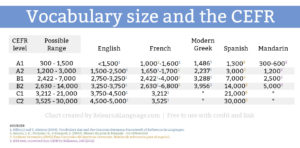
This chart is original to this website, like most of my content. If you want to learn about language learning, follow me on Instagram and YouTube.
Sources:
- Vocabulary size and the Common European Framework of Reference for Languages
- Beacco, J.-C., Porquier, R., & Bouquet, S. (2004). Niveau B2 pour le français – Un référentiel (secondary source)
- Instituto Cervantes (2006) Plan Curricular del Instituto Cervantes. Niveles de referencia para el español.
- (secondary source)
- Bellassen, Joël (2011). “Is Chinese Europcompatible? Is the Common European Framework Common?…”
Two things really explain the huge range of numbers here.
First, what is a word? Are <<to build>> and <<the building>> two different words?
Is <<space>> one, two, or three different words since it has so many meanings?
Second, are we measuring words we can passively recognize if we see them or actively bring up in a conversation or while writing?
Does spelling count?
And, unfortunately, there isn’t any real way to know how much vocabulary you have. Even apps that supposedly you can use to count up words, like DuoLingo or Drops, only count the words you can use out of a word bank–not words you can recognize in a magazine article or use in a text message.
So for this step, if you have an active/passive word count available to you because of a tracking app like Anki or Lingq, you can mark an X where you best see fit.
If you don’t currently have a list of how many words you can actively or passively use in the language, we’re not going to use this column while measuring your French level.
Step 3: Measure by overall language abilities
Now we’re going to look at your actual use levels, independent of grammar and vocabulary.
This next section is taken largely from the EuroPass website (yes, like the railroad).
But it’s the single best way I have seen anyone gauge their language proficiency levels.
This part is extremely important because no matter how much or little grammar you know, in theory, your ability to use it in the wild is the most important.
Select your highest functioning level for each competency, and put an X in that row.
Listening
- I can understand familiar words and very basic phrases about myself, my family, and things immediately around me when people speak very slowly and clearly. (A1)
- I can understand sentences or main ideas related to daily life such as shopping, employment, directions, and the local area when spoken clearly. For example: simple directions, announcements, or short informational messages. (A2)
- I can understand the main points of speech when it’s clear but not slowed down, such as many radio or TV programs about subjects I’m interested in. (B1)
- I can understand extended speech and lectures, as well as follow complex topics with which I’m somewhat familiar. I can understand most TV news or films without subtitles. (B2)
- I can understand long speech, even when it’s not well structured or spoken clearly. I can watch TV or films without much effort. (C1)
- I have no difficulty in understanding any spoken language about most subjects, even if it’s spoken quickly and unclearly, providing I have some time to get familiar with the accent. (C2)
Reading
- I can understand familiar names, words, and basic phrases–for example, on posters, catalogs, signs, or graphics. (A1)
- I can read short, simple texts about everyday information such as menus, printed instructions, transportation time tables, or informational text messages. (A2)
- I can understand texts that consist of every-day languages, such as descriptions of recent events in a newspaper article, memos about my area of work or study, or texts from friends recounting their day. (B1)
- I can read articles or reports concerned with contemporary issues of our times, as well as understand the writer’s own point of view. I can understand literary descriptions. (B2)
- I can understand long and complex literary texts and understand various styles of fo writing. I can understand specialized articles in various fields outside of my own. (C1)
- I can read with ease in virtually any form of the written language, including abstract or linguistically complicated texts such as manuals, specialized articles, and literary works. (C2)
Speaking
- I can use simple phrases and sentences to describe where I live, my job, my family, and my friends. (A1)
- I can use a series of sentences to describe my life, educational background, my most recent job, and my interests. (A2)
- I can express my dreams, hopes, ambitions with some detail; I can give brief explanations, opinions, or make plans; and I can narrate a story or retell the plot of a film or book, as well as explain my reaction. (B1)
- I can present a clear, detailed description of a wide range of topics in my fields of work and interest. I can explain my viewpoint and give the advantages and disadvantages of various questions. (B2)
- I can present clear, detailed descriptions of complex subjects, integrating sub-theme or various points of view, and rounding it off with an appropriate conclusion. (C1)
- I can present a clear, smoothly-flowing description or argument in a speaking style appropriate to the context in a way that helps the recipient note and remembers the most important points. (C2)
Writing
- I can write short, simple sentences, like what I might write on a postcard. I could fill in my name, nationality, and address on a hotel registration form. (A1)
- I can write simple notes and messages, such as text messages, personal thank you letters, or grocery lists. (A2)
- I can write a text on a topic that’s of personal interest, such as describing my experiences or impressions of something that happened to me. (B1)
- I can write an essay or report on a wide range of subjects, both passing on information and giving my own detailed point of view. I can write detailed letters of my own personal experiences. (B2)
- I can express myself in clear, well-structured text, expressing points of view to some length. I can write essays or reports in the appropriate tone and style for the reader which highlights the main points of the issue. (C1)
- I can write smoothly flowing text in a variety of professional or literary styles in a variety of logical structures. (C2)
RESULT: Figure out your own French language level in CEFR
Here’s an example of how my own chart looks like in French or Spanish.
You can see how my little x’s are all over the place with French, and a bit more aligned (but not totally) in Spanish.
Because guess what?
Languages are too complicated and interesting to be perfectly simplified into one little chart!
Now let’s see how to read this chart so you can find out your French language level.
What was your original goal in Googling this article?
- Gauging my progress. No need to put yourself in a single category! You can now see skill-by-skill where you’ve made the most work. (For me, I can feel great about my abilities to understand Spanish and read French.)
- Placement into a class. Your instructors will have their own placement tests, but if you’re wondering what to expect you can assume it’ll be in the middle/low of where your skills are. (For me, I would assume a high B1 French or low C2 Spanish.)
- Planning independent studies. You can now focus on whatever you need the most in, depending on your goals. (For my French, it would be working on my writing.)
- Finding new language learning resources. You can now select level-appropriate materials! We have a ton at the bottom of this article.
- Planning on taking an accredited test. If you need to get a language certificate for work or school, you now know where to aim. (For me, I’m confident that I could work to pass a B1 French exam within a few months if I put my mind to it, but B2 might take up to a year.)
Translating the ACTFL and CEFR French levels
Now, if you want to be able to translate your CEFR levels into American language levels, here’s a quick chart.
If you don’t need the ACTFL for school, skip down to the BONUS section of this article: Language resources for different French levels.
The following chart is taken from La evaluación oral: una equivalencia entre las <<guidelines>> de ACTFL y algunas escales del MCER, a paper out of the Spanish language department at the University of Granada.
| European Levels | American Levels |
| <A1 | NL, NM |
| A1 | NH |
| A2 | IL, IM |
| B1 | IM, IH |
| B2 | IH, AL |
| C1 | AM, AH |
| C2 | AH, S |
BONUS: Language resources for different French levels
I have a massive list of French language resources on one of the static pages of this blog.
Now that you know your level, head over there and find your next favorite resources at your current level. (But you can also get a little more daring by trying resources at the French language levels above your current one!)
Each of those posts was written by a polyglot or language teacher, so I can promise they’re the best recommendations around.
Do you have any additional questions about French language levels? Leave them in the comments so I can respond and add to this article going forward!
